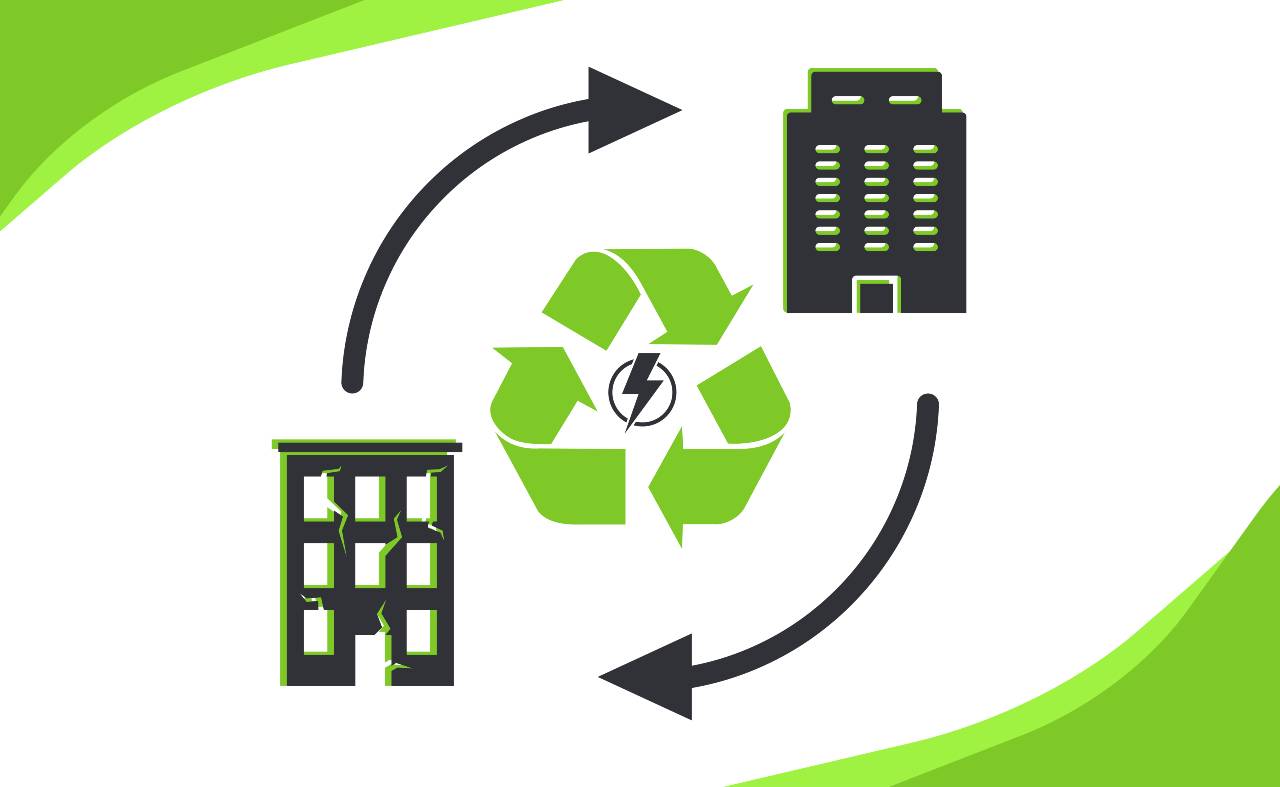
Construction is a major energy consumer, and the need for sustainable practices increases as the industry grows. One of the most sustainable practices you can adopt when building is recycling. By recycling construction materials, you are not only reducing your environmental impact, but you’re also reducing your energy consumption. In this article, we’ll discuss how recycling saves energy in construction and provide you with some tips on how to get started. Stay tuned for more details.
Does recycling save energy?
Yes, recycling saves energy in construction. By doing so, builders can reduce their carbon footprint and significantly decrease the amount of greenhouse gas emissions they produce. Studies have shown that recycling can reduce an average builder’s ecological impact by as much as 45%.
There are several reasons why recycling is such a great environmental choice for builders. First and foremost, it helps divert waste from landfills. Second, recycled materials contain less energy than new materials when they’re produced. Finally, recycling reduces the need to purchase material supplies or create new products from scratch, which require significant amounts of energy to manufacture and transport.
So what should builders do first? The best way to start is by looking at their current practices and assessing where there are opportunities for improvement. Once you’ve identified areas that could be improved, commit to changing them and see how your savings stack up.
How can recycling save energy as well as materials?
Recycling is an excellent option for saving energy and materials in construction. Not only does recycling help reduce the waste that needs to be disposed of, but it can also save valuable resources like oil and gas.
The main benefits of recycling construction materials are reduced environmental impact, increased resource efficiency, and improved safety. Recycling helps reduce the need for new fuel sources (such as oil or natural gas), reduces emissions from manufacturing processes, and saves valuable raw materials like steel and concrete. In many cases, recycled products outperform their original counterparts because they contain fewer contaminants and toxins.
There are several ways to recycle construction materials safely and efficiently. The most common methods involve sorting demolition debris into recyclable and non-recyclable categories; then processing each type of material according to its specific requirements (for example, metal can be melted down while plastics go through an irradiation process). Other methods include using plastic baling nets or drop sheets during building site cleanups or exporting engineered pavement directly from construction sites overseas for reuse in other countries.
How do you recycle and reuse construction waste?
Recycling and reusing construction waste is a big environmentally friendly trend, and it’s one that you can help promote in your workplace. Not only does recycling reduce the amount of unnecessary garbage produced by construction projects, but it also helps to conserve resources such as energy and water. In addition, recycled materials are often used in new construction projects instead of being landfilled.
There are several ways you can recycle construction waste at work:
- Sort construction waste by type and size. This will help you identify which items can be recycled more easily.
- Collect all types of construction debris, including concrete, metal, wood, plastics, tile, and stone.
- Register with your local municipality or the recycling authority for collection services. This will ensure that the correct sorting and processing facilities are available when you collect your recyclable materials.
- Prepare a plan for how to recycle the material once it’s collected. This will include details such as where to take the material safely and what equipment needs to be used during the recycling process.
- Reuse concrete as aggregate. Concrete may seem like an unusual source of recyclable material, but it has several potential uses. Reused concrete can be used as aggregate in new projects or recycled into bricks, blocks, pavers, and other products.
- Use leftover building materials in new projects – this includes bricks, tiles, concrete blocks – the list goes on! Remember that reusing these everyday objects in new ways reduces the amount of new construction waste created each year.
Doing these simple things at work can help protect the environment and save money while promoting sustainability!
How can construction projects reduce waste?
Construction projects can be a huge source of waste. Construction projects generate mountains of garbage every day, from building materials to leftover equipment and debris. And because construction sites are often chaotic and poorly supervised, it’s easy for waste to go unnoticed or uncontrolled. Here are some tips on how to reduce the amount of waste generated during a construction project:
- Plan your project carefully. When planning a construction project, consider the amount of waste generated. Chart out how much materials and equipment you’ll need in advance to avoid over-ordering or scraping down resources during construction.
- Control traffic flow throughout the site by restricting access to certain areas during peak hours. This will help prevent unnecessary duplication or contamination of supplies.
- Coordinate work schedules so that workers only work at one location at a time, resulting in more packaging and transportation needs.
- Establish clear procedures for collecting and disposing of material wastes (e.g., using designated dumpsters). This will help streamline operations and minimize environmental impact.
- Choose recycled or sustainable materials whenever possible. When utilizing traditional building materials like steel and concrete, use recycled content where possible. This will help minimize the amount of new material needed, reducing environmental impact and waste management costs associated with production and disposal.
- Minimize the use of temporary materials by finding alternative methods when possible. For example, using concrete instead of mortar might save time and money.
- Dispose of material properly whenever possible. When items no longer have a beneficial purpose (for example, after demolition), recycle them instead of throwing them away indiscriminately. It reduces waste and keeps valuable resources out of landfills where they’re not needed or wanted anymore.


